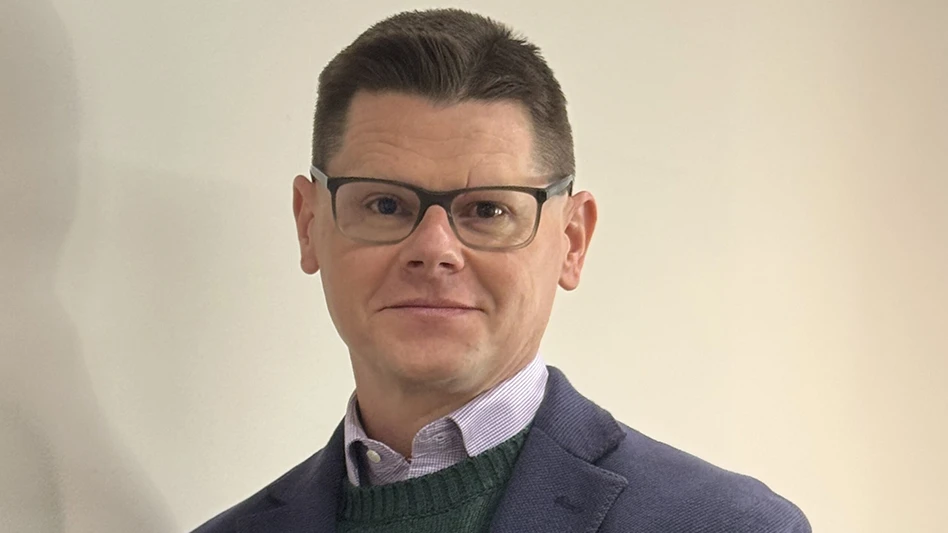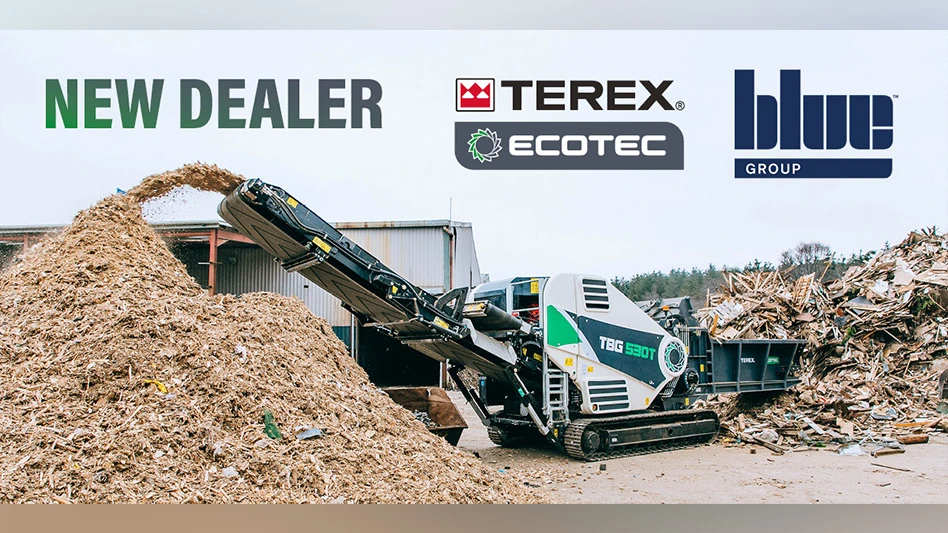If the growth experienced by United Recycling Industries, West Chicago, Ill. is any indication of the market for recovering precious metals, then 1999 will be a good year, indeed. The company ended 1998 in a 30,000-square foot facility and upgraded to 85,000 feet in January. By April, they had leased another 100,000 square feet nearby.
“We are doing a huge volume of electronic recycling,” says company president Robert Glavin. “The value per pound may be down, but with so many new and different products coming to market we are staying quite busy.”
Glavin’s experience is reflected in many quarters of the precious metals recycling business. Whether the metals are recovered from electronic components, catalytic converters, photographic film or consumer jewelry, the supply seems to be plentiful. Commodity prices are nothing to write home about, but the markets are active and material is moving both into and out of processors’ facilities.
“It is both a problem and an opportunity, depending on how you look at it,” says Steve Skurnac, president of Micro Metallics, Roseville, Calif.
The slam on recovering gold from electronics was that manufacturers had begun to put less plating on components. As plating dropped from 80-100 mils to 5-20 mils some feared that there would be insufficient material to recover. “Normal electronic equipment has nowhere near the amount of precious metals that it did a few years ago,” Skurnac says. “With less metal on ICs (integrated circuits) and computer boards, recovery is a much tougher go.”
What happened, however, is that a flood of newfangled gadgets hit the market. Cell phones and cell phone chargers, lap top and palm top computers, and all sorts of consumer electronics flooded the market. To add to the rush, products no longer are expected to last five or 10 years but get trashed in six to 24 months. That puts the components into the hands of recyclers like Skurnac and Glavin much sooner.
“We’re now doing a million pounds per month of computers, printer monitors and phones,” says Glavin. Much of the rush, he suspects, is fueled by the threat of Y2K obsolescence. In addition, Corporate America discovered that the 486 and original Pentium processors they bought a couple of years ago are hopelessly outdated in today’s business environment.
“In the next couple to three years you will see a huge influx of material,” Glavin predicts. “Industry is changing its computers faster. It doesn’t pay to upgrade.”
As a result, both the asset recovery line (which de-manufactures equipment, removing usable chips, modems and fans) and the precious metals recovery businesses are booming.
Companies that accept electronic scrap for recycling such as United Recycling, Micro Metallics and Handy & Harman Refining Group Inc., South Windsor, Conn., should have no materials shortages for some time.
While he is not happy with $280 gold prices, Glavin is philosophical. “The market is always where it should be,” he says, “even if it is not where you want it to be. Anybody can do okay in an up-market. You have to work to do well in a poor one.”
Skurnac sees the same thing. “With gold in the high $200-range, we’ve given up 25% of the value of a year ago when it was near $400,” he says. To make matters worse, the price of copper has wallowed at a low level in recent months, eliminating much of the opportunity to make money from wiring and circuitry.
However, the cloud has a silver - er, palladium - lining. “The palladium price is definitely helping. There is more palladium in new electronic materials. That palladium is worth as much as gold,” Skurnac says. Palladium is worth more per-ounce than gold, which makes it the shining star in the precious metals scrap market.
PALLADIUM
The long-awaited price increase in palladium has finally come to pass. In a flip-flop from tradition, the price for palladium has been tracking at least $4 to $5 higher than the price for platinum. “Finally, the markets understand and accept that palladium is not a bad word,” says Ashok Kumar, venture manager for A-1 Specialized Services, Croydon, Pa. He notes that automobile manufacturers are building more palladium-intensive catalytic converters in their new products in order to meet EPA standards. The platinum market, meanwhile, remains steady to slightly lower.
“The only way platinum will go up is if there is some disruption in production in Russia or South Africa,” Kumar says. However, especially on the Russian side of the equation, that scenario is not out of the question. Over the past two decades, the price for platinum has averaged about $370 to $375 with some ups and downs. Platinum recently has been selling around $362 and palladium has been bobbing around the $370 mark, having settled back from a record $417 an ounce in May, 1998.
“We look for those numbers to remain basically steady,” Kumar says. “Business is going well,” he adds. If anything, the bulk of the potential price movement would be on the up side. Current worldwide mine production of palladium about equals the current automotive demand rate of slightly more than four million ounces net of automotive recycling. Inventory draw-down, mainly from Russian stocks, accounts for most of the balance of total palladium supply, which this year will probably be around eight million ounces and which should be sufficient to cover total demand including (most prominently) dental and electronic.
While the auto industry’s increasing reliance upon palladium has certainly helped that metal’s market, there is some feeling that the manufacturers have gone a bit overboard in the amount of palladium being used in converters. Even with a more efficient use of palladium in converters, though, it looks like demand will remain strong.
“Palladium has become like rhodium,” Kumar says, “very sensitive. It doesn’t take a very large sell or buy order to impact the price. Try it with platinum and nothing happens.” Rhodium prices started 1999 at the $900 level but have pulled back a bit to the $850 range.
The real excitement in the platinum-palladium scrap market will probably come from Europe, according to Johnson-Matthey’s (J-M) Ellen Zadoff. Noting that the U.S. market is mature, she says, “Europe is the most interesting market.” That is mainly due to the changing recycling legislation picture and the growth in that market. Supplies of platinum from South Africa increased in 1998 and J-M sees a continued slight rise in South African production through 1999. More substantial growth in production should occur between 2000-2002 when two new mines come on stream. Russian production, about 850,000 ounces in 1998, was expected to fall short of exports, further depleting the stockpiles.
Demand for platinum from automakers was expected to be around 1.8 million ounces for 1998, off by 70,000 ounces from the previous year. In 1998, about one-third of new U.S. vehicles had to meet the National Low Emission Vehicle (NLEV) program standards. That figure will be 100% by 2001. Palladium, the most effective catalyst for control of hydrocarbon emissions, will be used in all NLEV catalyst systems, J-M says. They expect final figures for palladium demand to show the market wanted 8.2 million ounces in 1998, exceeding supply by more than a million ounces.
So why isn’t platinum taking a nose-dive? For one, exports of vehicles to the U.S. and European markets from countries using catalyst systems with relatively high loadings of platinum have kept usage high. Countries as diverse as Argentina, Malaysia and India have tightened emission standards, J-M says, and this boosted demand. Secondly, use of platinum in jewelry fabrication was expected to reach 2.19 million ounces in 1998, up 30,000 ounces.
Other world events have not been so kind to the platinum/palladium trade. The price for steel scrap has been depressed, and the blame is widely put on Brazilian, Russian and Japanese dumping of new steel. With lower steel scrap prices, there is less incentive to dismantle cars. For converter collectors, this means fewer converters are available. However, this will probably not remain a long-term trend. “I believe the market will come back when the price for steel improves,” Kumar says. “It’s still uneconomic to put platinum or palladium in landfills,” he adds.
FUTURE TRENDS
A wild-card in the entire platinum-palladium market is the current political situation in Russia. If Boris Yeltsin is unable to hold the government together, or if there is no smooth transition from Yeltsin to a successor, it is quite likely that there could be serious supply disruptions in the platinum and palladium markets.
In April, 1998 disruption of Russian supplies sent platinum prices to $429. A serious problem in Russia could see a repeat, even though October’s five-year low of $335 showed that recession fears were more on buyers’ minds than politics at that time. “Palladium prices of $350 to $360 are not high numbers,””Kumar says. “Those numbers could go further up.” In addition, he sees things proceeding well in Europe.
Glavin, who does some catalytic converter recycling, says he is being offered “a lot” of material. “The past four months have brought substantial quantities of available material,” he says.
He sees continued interest in the market, especially from Mexico. Although the number of cars being scrapped in the United States is fairly predictable from year to year, the entry of a new source of material could liven things up a bit. “Recycling in Mexico is starting to take off. If things pan out, it could mean there will be a tremendous amount of catalytic converters available,” he suspects.
SILVER, GOLD UP
The business of recycling precious metals like gold, silver and palladium is not a new one. The Egyptians needed silver, especially, for making precious objects, jewelry and furniture for their temples. An amazing collection of silver vessels of Asiatic workmanship were found in a Twelfth Dynasty (2000-1800 BC) cache dug up at El-Tod to the south of Thebes. The containers all show specific Asiatic markings. Since silver mining is almost unheard of in Egypt, it is likely that the silver vessels were purchased as scrap, shipped many miles, and marked for recycling by Egyptian silversmiths.
Things have not changed 4000 years later. Paul Bateman, executive director of the Silver Institute, Washington, D.C. says that silver recycling has grown from a low of 128 million ounces in 1990 to 152.5 million ounces in 1997. The average annual figure for silver recycling was 142 million ounces. “There actually has been steady growth throughout that period,” he says.
Total silver production runs about 863.4 million ounces, with the lion’s share coming from mines.
Although final numbers are not yet in, Bateman is confident that the 1998 figures will show greater silver recycling volume than 1997. “The price of silver was higher in the first quarter of 1998 and that brought some scrap into the market,” Bateman says.
With prices jumping to $7.80 in February 1998, there was a marked increase in volumes. However, by year’s end, the price had dipped below $5. Through early 1999, the price puttered around in the low-$5 range. For recyclers, some of the effects of the price changes are masked by the industrial nature of the market. Photographic silver still makes up about three-fourths of the U.S. market. Even with the move to computerized photography, the market for photographic silver continues to grow.
Likewise, the market for electronic and computer-originated silver is doing well.
One area which responded to the early 1998 price jump was Asia and India. Any price increase tends to flush out scrap and the February upturn was no exception. However, Bateman says he does not expect to see any dramatic growth in the amount of silver recycled through 1999.
On the gold side of the market, the U.S. production of 11 million ounces per year keeps it solidly in second place behind South Africa and ahead of Australia and Canada.
The economic problems in Asia caused substantial growth in scrap generation as the economic problems in east Asia—especially Japan and Korea—mobilized people to cash in valuables.
Most observers predict a flat market for the rest of 1999. Unfortunately, that is not too exciting from a price perspective. In much of 1999, gold has traded in the low $280 range. The average price of gold was a full $100 higher in 1996, averaging $387 an ounce. Prices slipped to $331 in 1997 and below $300 to $294 in 1998.
“The lower prices are driven by market sentiment that looks at the sale of gold from central banks, absence of inflation, a strong equity market and lower inflation,” Bateman says.
Barring extraordinary world events, there is nothing to indicate that gold will break out of its present narrow trading range soon.
OUTLOOK
There is a lot of material available, especially in the electronics scrap industry. The question is whether it can be handled economically. Skurnac notes that the cost of collecting, disassembling and processing electronic scrap may exceed the value of recovered materials. Some customers are being charged on a “net-cost” basis and find themselves paying to break down and recycle office equipment.
Others send it abroad to Asia. On the West Coast, especially, one can realize 15 or 20 cents a pound from Chinese or other markets. “The Asians scavenge material more aggressively,” Skurnac says. “For companies without a strong product stewardship bent, that is a viable opportunity.”
In a few years, that may change. Already Europeans are talking “life cycle” and “manufacturer take-back” legislation, which requires all manufacturers to take back the product at the end of its useful life.
Within the past few months, several states—including Minnesota, Oregon, South Carolina and Massachusetts—have begun serious discussion of life cycle laws.
“Those laws organize the process and will get infrastructure in place,” Skurnac says. “If those laws do for the electric components industry what they did for car batteries, then they may be a good thing,” he concludes.
The author is an environmental writer and Recycling Today contributing editor based in Strongsville, Ohio.

Explore the June 1999 Issue
Check out more from this issue and find your next story to read.
Latest from Recycling Today
- China to introduce steel export quotas
- Thyssenkrupp idles capacity in Europe
- Phoenix Technologies closes Ohio rPET facility
- EPA selects 2 governments in Pennsylvania to receive recycling, waste grants
- NWRA Florida Chapter announces 2025 Legislative Champion Awards
- Goldman Sachs Research: Copper prices to decline in 2026
- Tomra opens London RVM showroom
- Ball Corp. makes European investment





